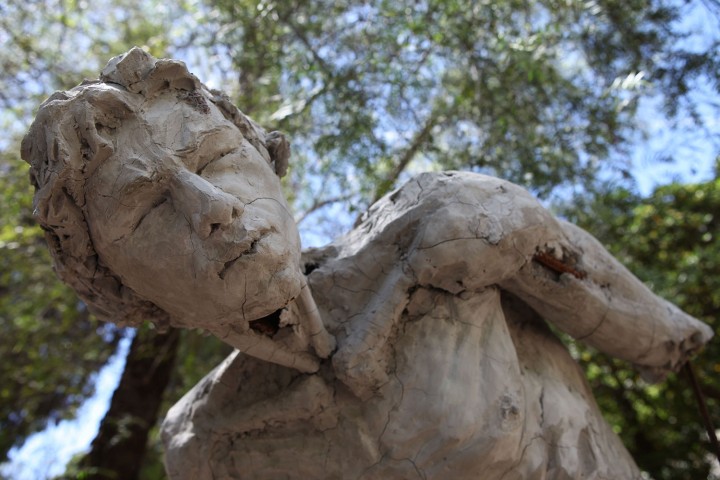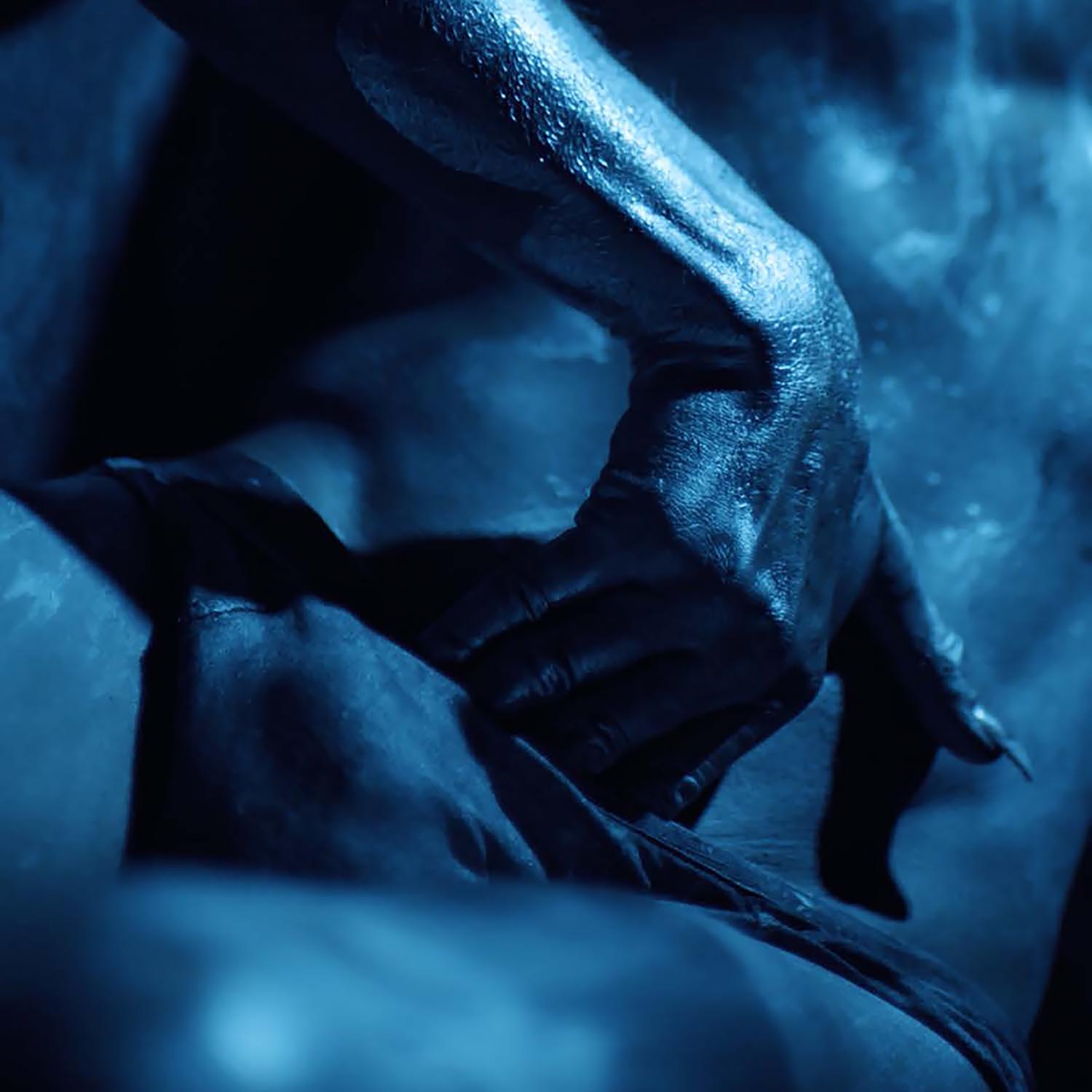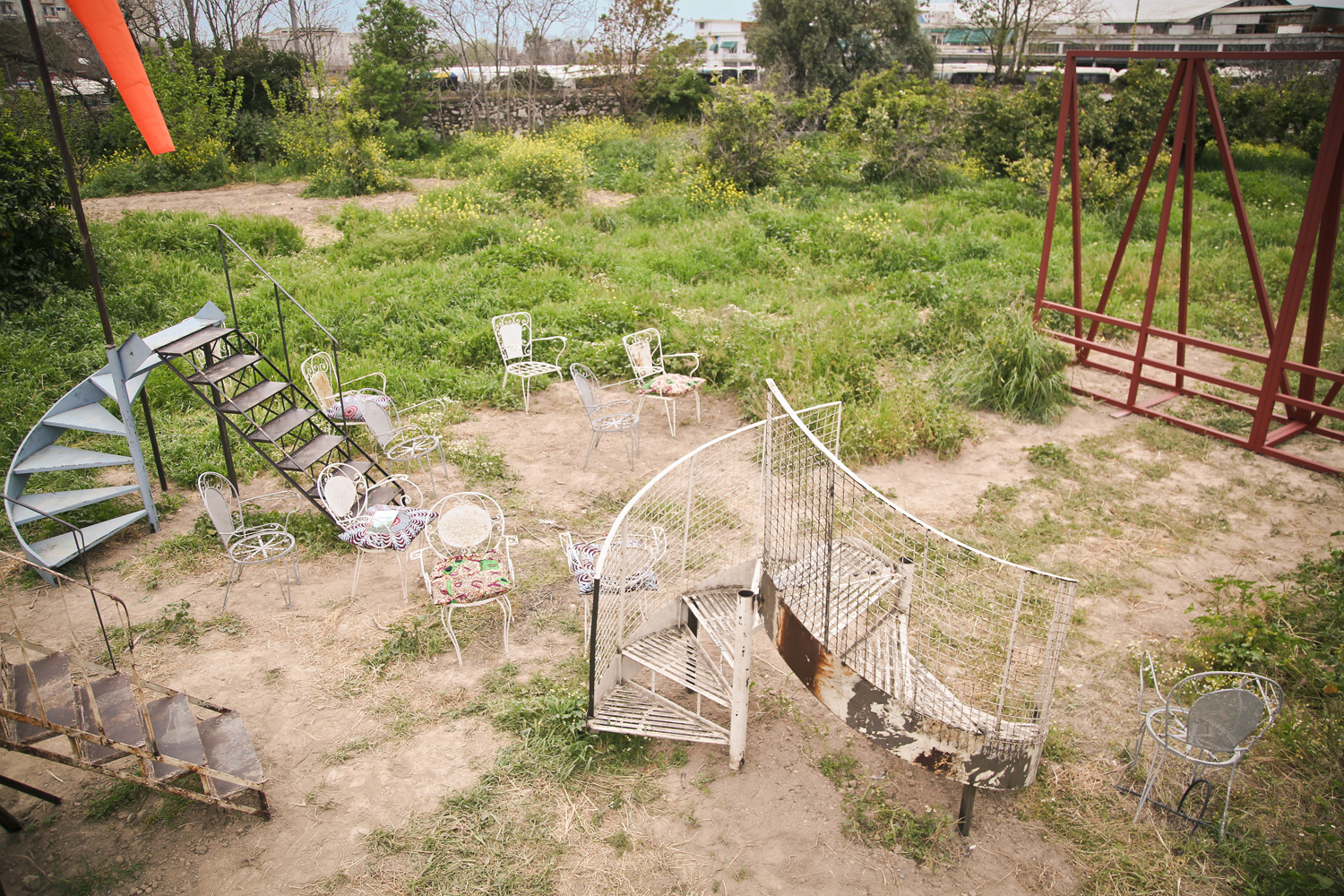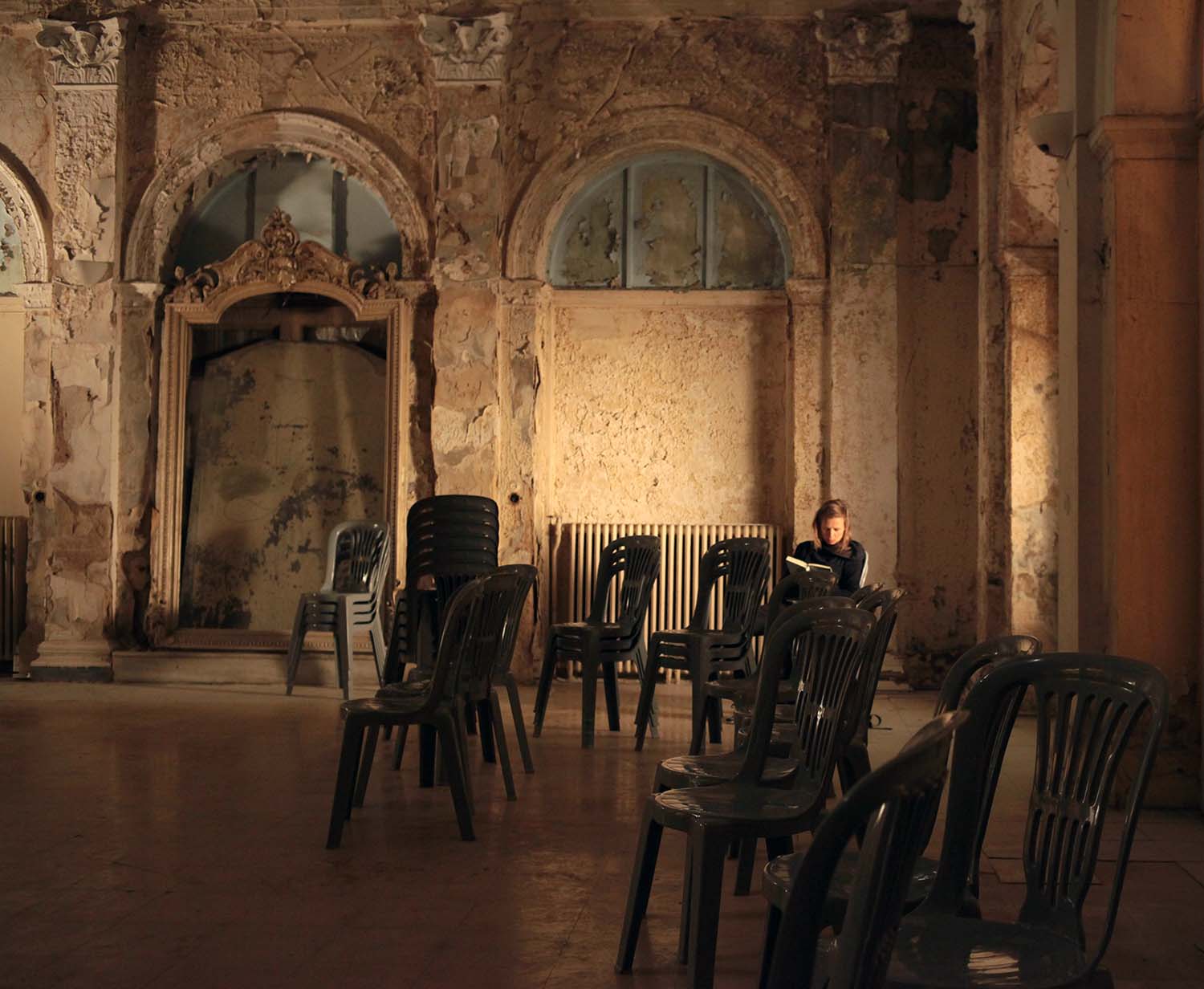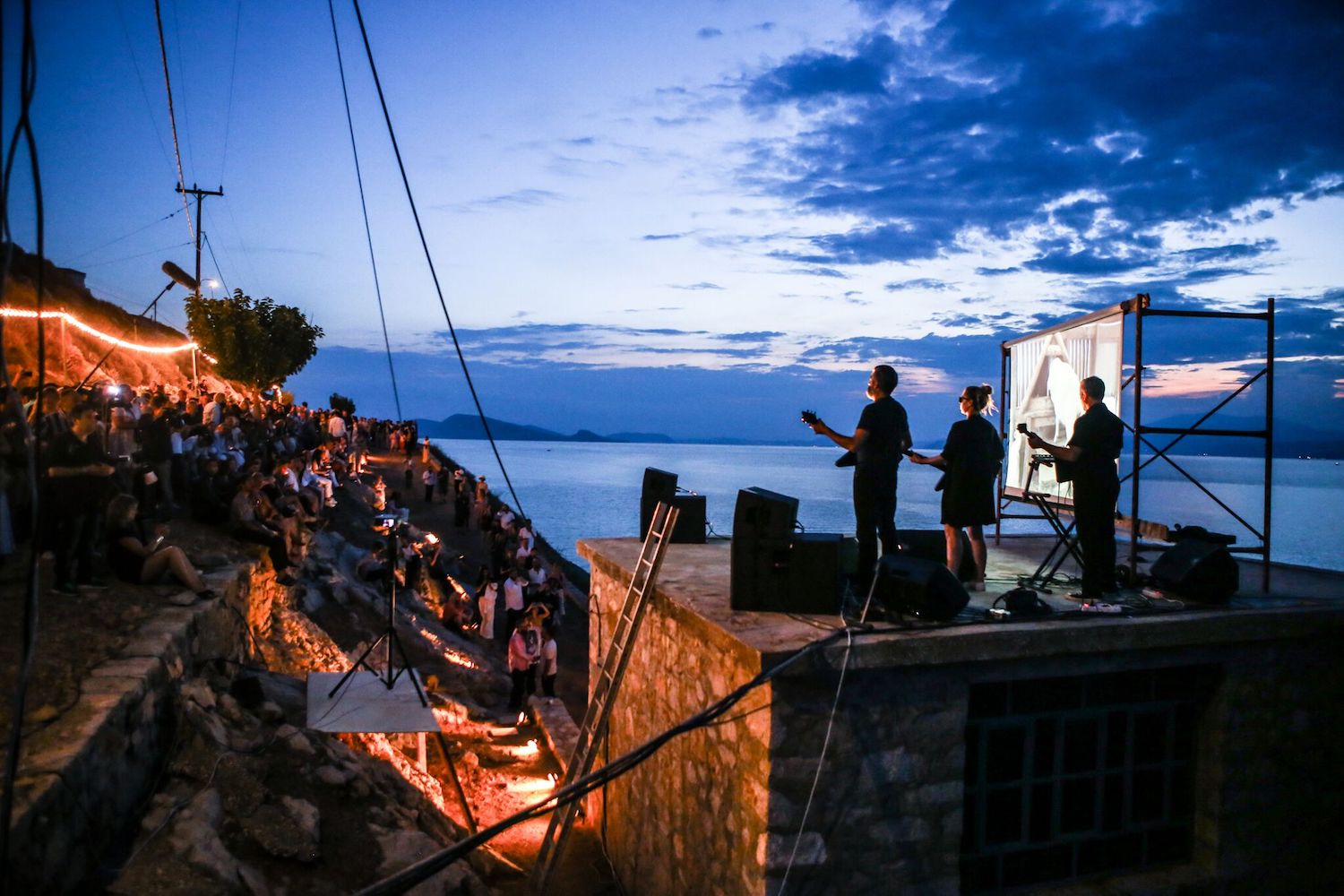Organized by the Whitechapel Art Gallery director Iwona Blazwick in collaboration with Neon, “A Thousand Doors” traces an analogy between sculptures and books as objects capable of metaphorically opening new portals to knowledge and imagination. Given the current sorry status of printed papers, the timing couldn’t be more sensitive. Defying the most dramatic forecasts about the future role of books and libraries, the exhibition reinforces the notion of books’ tactile experience right in their home turf by choosing as designated venue the Gennadius, a magnificent building dedicated to the study of ancient and modern Greek culture that, to add poignancy to the whole idea, open the doors to the public for this kind of venture for the very first time in its long history.
The exhibition can fundamentally be divided in three separated segments. The first one, in the library cabinet, acts as a sort of Wunderkammer, with artists’ self-made publications and small-sized pieces exhibited in vitrines in a solemnly low-lit room. The second one is the garden, where the curatorial concept of displaying only already existing works emerges more conspicuously through an exercise of recontextualization that brings further dimension to their site-specific character. The third one, spread around the rooms of the library, is possibly the most intriguing, as it addresses the never fully resolved issue of art in public spaces and the consequent readjustment it faces when confronted with an audience who don’t necessarily want to see it.
Whereas the cabinets favor deep intimacy and reflection, with great efforts by Matthew Barney, Pavel Büchler, Ceal Floyer and Isa Genzken amongst the others (the presence of a portrait by Wolfgang Tillmans in Genzken’s work introduces a nice, secretive collaborative touch), the garden features diametrically opposed traits, staging a game of hide-and-seek with highlights in Jane & Louise Wilson’s sound piece, a de-monumentalized version of Adrián Villar Rojas’ Return of the World (2012) originally seen at Documenta 13, and Giuseppe Penone’s gold tree Spazio di luce (2012), whose fake materiality engaged in piquant relationship with actual nature. In the main library space, Nina Fischer and Maroan el Sani’s tribute-film to the old Bibliotèque Nationale de France in Paris Toute la memoire du monde (2011) illustrates the sad destiny of a majestic architecture victim of an excess of modernism. Completely empty following the relocation of a the library in a larger building and unusable for other purposes due to the very specific structures of its room, the listed building now lives in a state of limbo, with the dire perspective of decaying forever empty. Meriç Algün Ringborg’s library within the library moves along similar revaluation lines, filling three shelves with books from the Gennadius catalogue that no user has ever borrowed. Lurking in the main room, Georg Herold’s semi-invisible Bent Poetry, w up!, a piece originally seen at Skulptur Projekte Münster in 1997, is an extraordinary equation of intrusiveness and discretion. Consisting of a labyrinth of boards attached to metal wires running on top of the room, it acts as an imaginary second roof, deceptively sheltering the readers only to reveal bits of poetry about platonic love — a mysterious form of affection that more often than not can turn the life of the parties involved into an emotional tangle.

